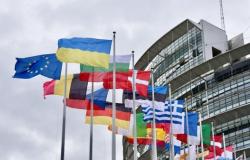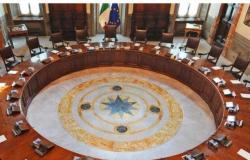Beyond the closed gate, on the wall of a now empty, or rather cleared, space, you can see the face of Gaetano Latino. The mural depicting him is still there. Until a year ago that place was teeming with life and initiatives organized by Collettivo 20092, which had wanted to pay homage to him in this way, shortly after his passing. Having met him, at the inauguration I imagined his happiness in being remembered by young people.
On February 26, 2016, the last partisan of Cinisello left us. Mirco it was his battle name and he was part of the 104th Brigade Garibaldi SAP Gianni Citterio. His life was characterized by a strong sense of civil and social responsibility. The reasons for the assignment of the Golden Ear 2006 well summarizes the meaning and value of his commitment: “His intense and continuous political, trade union and social commitment in our city is admirable. […] A coherent witness to the values of freedom and democracy expressed in the Resistance as a partisan and still transmitted today with passion to the new generations through his active presence in the educational and training field”. His ideals were anti-fascism, opposition to violence and war, defense of the Constitution. Within these values he made his choices, sometimes apparently contradictory and in contrast with his party affiliation, but in reality absolutely consistent with the task he had assigned himself.
After the Resistance, the experience within the Partisans of Peace Movement was memorable for him. The city’s Peace Movement delegated Latino (Youth Front) and Cesare Caimi (Communist Party) to participate in the first World Peace Congress in Paris in 1949. 2287 delegates from 72 countries were present; the Italian delegation was led by Pietro Nenni. The Movement’s commitment was fundamentally aimed at banning atomic weapons and the meeting of the five great powers for a peace pact that would avoid a new disastrous conflict. Pablo Picasso painted the famous congress poster Dove of peace. In the same period the Italian Parliament had to vote for the ratification of the Atlantic Pact. On May 1 of that year, a petition against NATO membership was initiated. The police commissioner of Milan prohibited the collection of signatures; despite this, in two months, 6,300,000 were collected. The Peace Movement was deeply felt by the citizens, who had just emerged from a terrible conflict, and participation in the demonstrations was also very strong in our city. “A truly large demonstration was held upon our return to Cinisello at the sports field in via Monte Ortigara,” wrote Latino, “where we reported on our participation in the Congress. I cannot describe my emotion in finding myself speaking in front of a multitude of people from my city.”
From the post-war period to the first half of the 1950s, Latino served in the Communist Party, taking part in the fights to safeguard jobs. From 1956 he began a process of gradual distancing which led him to move closer to the positions of the movements born with 1968 and subsequently to some party formations born from that experience. In the seventies he was also a city councilor. If this political path is compared to his commitment in the social field, his desire to remain faithful to his original choices of defense of the ideals of the Resistance and protection of the weakest social groups clearly emerges: the foundation of the city’s AUSER, the creation of the “grandparents friends” activity and the testimony of the anti-fascist experience, brought to schools within an ANPI educational project, are a concrete demonstration of this. His commitment to young people to bear witness to the values of the Resistance was perhaps the trait that most distinguished him in the last years of his life. In his speeches to the students he said: “Making a wealth of all the vicissitudes is a bit difficult, but with good will it is possible. I learned some values from the partisans that were the complete opposite of what I had learned as an avant-garde during fascism. The values I have acquired are altruism, solidarity and above all loving my fellow men, to whom I have dedicated my entire existence”.
Gaetano was a person open to dialogue, available to listen to everyone, even the youngest, and in no way pleased with himself. He opposed his political opponents with the seriousness of his motives and his gentle smile. A light smile that was born from an optimistic vision of the future and from a serenity of mind originating from the awareness of having gone through life without betraying his values for interests of power or money. The call for honesty was constant in his address to young people, as was the invitation to study to acquire the knowledge that allows them to make informed choices. And he knew it well, having instead come to that awareness through an encounter with violence and fear.
It was 2002 when I met the partisan Mirco, that had nothing of the elderly veteran, of those who proudly tell their story. I found myself alone with Gaetano, Nino to his friends, a simple, nice, curious man, with the desire you could see in his eyes to get to know the person in front of him, even if he was younger and with less experience. He was the first to strongly want to promote the project that would have led him and Professor Morandi to meet hundreds of students. At a time when ANPI preferred to engage more in commemorations, he had understood, before many, how important it was the memory strategy: that unrepeatable moment that young people can experience by listening to history directly from those who lived it, an experience that remains indelible, more than all the pages of history books. Like few others, he knew how to establish an empathetic and engaging relationship with the kids, above all because he still believed in it: he believed he had done his part by rebelling against fascism, just as, after the Liberation, he had believed in the battles for peace and defense of workers. In particular he was proud of his latest commitment “full of solidarity”, as he liked to say: the foundation of AUSER. And above all he was convinced that it was thanks to his struggle, to the risks he had taken, he like all the other partisans, if the Italians had been able to win the right to write their own Constitution, a privilege that would not have been available to a defeated country. With the War of Liberation they had restored dignity to the nation. It was that Charter that he waved towards the end of the meetings, showing it to the students and exhorting them to commit themselves to defending it. He, who had known a world without freedom, wanted to make the kids understand what Piero Calamandrei said: “Freedom is like air, you realize how much it is worth when it starts to disappear”.
I remember him on stage in Piazza Gramsci talking about Resistance, among rock and pop music groups, perfectly at ease among so many young people who could have been his grandchildren. He looked and was one of them. For many reasons Gaetano was ahead of all of us, certainly ahead of me who, believing him to be immortal, had not immediately given him due attention when he insistently asked for his speech to be recorded so that his testimony would not be lost. I remember him entering my office with his bag under his arm, I remember him taking off his hat, opening the tiny diary to arrange school appointments with me. Inevitably we ended up talking about some episode of the Resistance; I wanted to know more and asked him many questions and he was always available. I remember him leaving with that smile of his, the smile of a good man. First illness and then death took him away too soon. Too soon we lost the privilege of listening to him, of having him alongside us in our battles, too soon he finished telling us about San Martino, his friends killed in that terrible battle and many other stories of brave young people like him who had been less fortunate . Too soon Gaetano!!
G. MilaneseP. Rulli (ed.), GAETANO LATINO. From the Resistance to political, trade union and social commitment. THE STORY OF AN INCORRIGGIBLE OPTIMIST. TOutobiography of Gaetano Latino. Photography by Giorgio Benatti.
Tags: Nom guerre Mirco partisan Cinisello Balsamo





